-
Courses
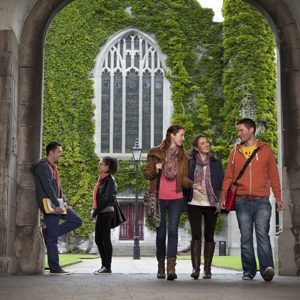
Courses
Choosing a course is one of the most important decisions you'll ever make! View our courses and see what our students and lecturers have to say about the courses you are interested in at the links below.
-
University Life
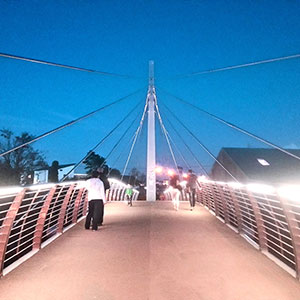
University Life
Each year more than 4,000 choose University of Galway as their University of choice. Find out what life at University of Galway is all about here.
-
About University of Galway
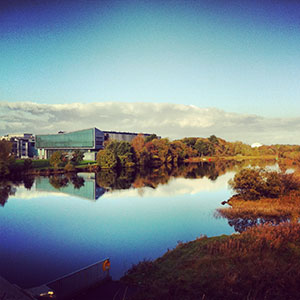
About University of Galway
Since 1845, University of Galway has been sharing the highest quality teaching and research with Ireland and the world. Find out what makes our University so special – from our distinguished history to the latest news and campus developments.
-
Colleges & Schools
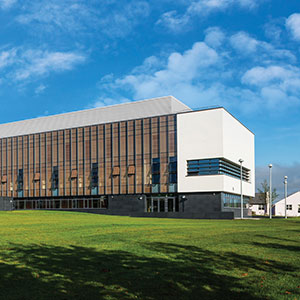
Colleges & Schools
University of Galway has earned international recognition as a research-led university with a commitment to top quality teaching across a range of key areas of expertise.
-
Research & Innovation
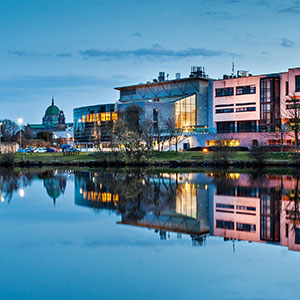
Research & Innovation
University of Galway’s vibrant research community take on some of the most pressing challenges of our times.
-
Business & Industry
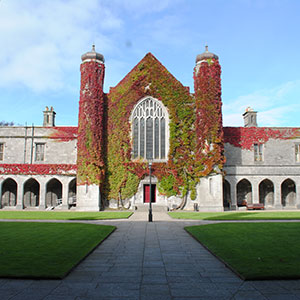
Guiding Breakthrough Research at University of Galway
We explore and facilitate commercial opportunities for the research community at University of Galway, as well as facilitating industry partnership.
-
Alumni & Friends
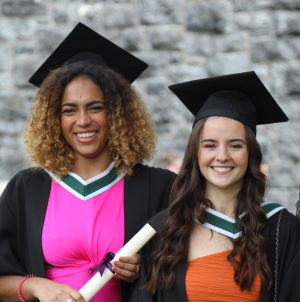
Alumni & Friends
There are 128,000 University of Galway alumni worldwide. Stay connected to your alumni community! Join our social networks and update your details online.
-
Community Engagement
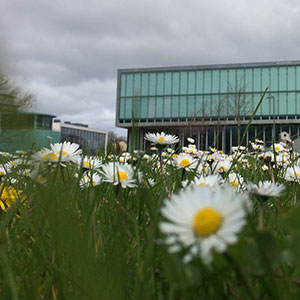
Community Engagement
At University of Galway, we believe that the best learning takes place when you apply what you learn in a real world context. That's why many of our courses include work placements or community projects.
News Archive 2019
Friday, 1 March 2019
The concept of PHABLABS 4.0 is based on combining the World of Photonics with the growing creative ecosystem of existing Fab Labs. Joining forces of top experts from 13 European photonics institutes and STEM-oriented organizations with Fab Lab stakeholders, PHABLABS 4.0 will deliver 33 Photonics Workshops, 11 Photonics Challengers and Photonics Toolkits tailored for three different target groups: Young Minds To enlarge and ensure the workforce of tomorrow the PHABLABS 4.0 project will focus on the young minds to stimulate their interest in a technical profession. Ryan McAuley (postgraduste student in the TOMI research group, Schhol of Physics) recently visited Kinvara National School, Co Galway to deliver a photonics workshop for young minds. Students The PHABLABS 4.0 project will focus on the students to encourage experimentation with photonics and grasp the strong enabling character of this key enabling technology in combination with other KETs. Young Professionals The project aims to introduce young professionals to specific aspects of photonics and trigger innovation in their products, with the focus on technological possibilities and entrepreneurial opportunities.
Friday, 1 March 2019
Congratulations to Chunshui Lin, Martin Sharkey and Kai Neuhaus who successfully defended their PhD theses recently. Chunshui Lin's PhD thesis was titled: Chemical Nature and Sources of Particulate Matter in Urban Areas. Pictured from the left are: Dr Jurgita Ovadnevaite, NUI Galway (co-supervisor), Prof. Roy M. Harrison OBE, FRS, University of Birmingham (external examiner), Chunshui Lin (PhD candidate), Dr Chaosheng Zhang, NUI Galway (internal examiner) and Prof. Colin O’Dowd, NUI Galway (co-supervisor). Martin Sharkey's PhD thesis was titled: Sources, concentrations, and remediation of hazardous brominated flame retardants from waste streams in Ireland. Pictured from the left are: Crispin Halsall CChem FRSC, Professor of Environmental Organic Chemistry at Lancaster University (external examiner), Dr Marie Coggins, NUI Galway (internal examiner), Martin Sharkey (PhD candidate) and Dr Harald Berresheim, NUI Galway (supervisor). Kai Neuhaus's PhD thesis was titled: The multispectral properties of multiple reference optical coherence tomography. Pictured from the left are: Prof. Martin Leahy, NUI Galway (supervisor), Kai Neuhaus (PhD candidate), Dr Nicholas Devaney, NUI Galway (internal examiner) and Prof. Rainer Leitgeb, Medical University of Vienna (external examiner).
Wednesday, 17 April 2019
Congratulations to Kenneth Hanley who successfully defended his PhD thesis recently. Kenneth Hanley's PhD thesis was titled: Detection of Faint Exoplanets in Multispectral Data. Pictured from the left are: Dr Nicholas Devaney (supervisor), Kenneth Hanley (PhD Candidate), Prof. Andy Shearer (internal examiner) and Dr. Loïc Deic, University if Saint-Etienne (France) (external examiner).
Friday, 1 March 2019
NUI Galway astronomers led by Prof Andy Shearer have recently been awarded observing time on the 8m Gemini South telescope in Chile to observe the isolated neutron star RX J1846.5-3754 using their Galway designed polarimeter, GASP (Galway Astronomical Stokes Polarimeter) . The star is highly magnetised with magnetic field about a million billion times stronger than the Earth’s magnetic field. Their aim is to observe the phenomena of birefringence, where the magnetic field itself causes the light from the star to become polarised. This will be an important test of one the fundamental theories of Physics – quantum electrodynamics. These observations, to be taken in July 2019, will be significant for both physics and astrophysics. Previous work has shown that such observations are possible and GASP will be able to show how the effect changes as the neutron star rotates.
Monday, 8 April 2019
Kevin Byrne, a student in the MSc in Medical Physics programme, has been awarded the Young Investigator Grant of €1500 for 2019 at the Annual Scientific Meeting of the Irish Association of Physicists in Medicine (IAPM) in Dublin, 23rd March 2019. Kevin’s project is entitled “Characterisation of novel optical fibre sensors for applications in Small Animal Irradiators”. At the same meeting, Mohammed Alswad, PhD student in Medical Physics, won the best oral presentation award (Radiotherapy) for his talk about ‘Radiobiological modelling of clonogen cell distribution, hypoxic fraction and tumour size effects on local tumour control of non-small cell lung cancer’. Congratulations to Kevin and Mohammed.
Friday, 18 January 2019
Earlier in 2018, we secured funding from the International astronomical Union (IAU) and the Royal Astronomical Society (RAS) to develop an exhibition that does not rely on the traditionally visual side of astronomy. Our project aims at enabling participants to learn more about the Solar System through a low cost tactile planetarium, which includes a scale representation of the planets using household materials, an asteroid tunnel made by local Irish artists and models of the planets made by a professional artist based in the UK. We also incorporated lights and open discussions to appeal to participants’ other senses and to convey a taste for astronomy to all participants regardless their age or ability. During the Galway Science Technology Festival 2018, we exhibited the planetarium for the first time as an inclusive space where children and families of all abilities and ages could engage with their peers and explore the outer space through their senses. More than 200 people attended the exhibition and the feedback was very positive. Organisers: Adriana Cardinot, PhD student, School of Physics, NUIG Dr Jessamyn Fairfield, Lecturer, School of Physics, NUIG Prof. Andy Shearer, Lecturer, School of Physics, NUIG Artists: Kelly Stanford, Finbar McHugh and Tommy Carew Collaborators: IMPACTE and ISL societies
Friday, 20 December 2019
Congratulations to Nina Wemken and Marta Fuente who successfully defended their PhD theses recently. Nina Wemken's PhD thesis was titled: Elucidating Levels and Pathways of Human Exposure in Ireland to POP-BFRs and PFOS (ELEVATE). Pictured from the left are: Dr Marie Coggins (supervisor), Nina Wemken (PhD candidate), Prof. Cynthia de Wit , Stockholm University (external examiner) and Dr Miriam Byrne. Big congratulations to Marta Fuente who successfully defended her PhD thesis. Great discussions on the thesis contents & future projects with EU partners. Vamos! Pictured from the left are: Dr Mark Foley, NUI Galway (supervisor), Marta Fuente (PhD candidate), Dr Miriam Byrne, NUI Galway (internal examiner), Dr Alexandra Cucos (external examiner).
Wednesday, 28 August 2019
Applications are invited from suitably qualified candidates for a full-time, fixed term position as a Research Scientific Data Systems Manager within the Centre for Climate & Air Pollution Studies, Ryan Institute, at the National University of Ireland, Galway. This position is funded by the SFI (MaREI Research Centre) and is available from up until September 31s 2020. The position contributes to the Science Foundation Ireland-funded Centre on Marine and Renewable Energy Ireland (MaREI). The position will be supervised by Professor Colin O’Dowd (http://www.nuigalway.ie/physics). C-CAPS conduct research into atmospheric composition change and its influence on air pollution and climate change. More detail is found on www.macehead.org. This position is funded by the Science Foundation Ireland as part of the Observations and Monitoring for Marine & Renewable Energy spoke to the Marine & Renewable Energy Ireland (MaREI) research centre (http://www.marei.ie ). The position is associated with the sub-project High-Resolution Marine Meteorology Observation and Forecasting: Remote Sensing, Modelling, Data Assimilation and Integration. Further information is available from the University Vaccancies website.
Monday, 15 April 2019
Astronomers at NUI Galway are part of an international team which for the first time have used the VERITAS gamma-ray telescopes to measure the angular diameter of stars. The study was published in the journal Nature Astronomy. VERITAS is an array of four 12-metre gamma-ray telescopes located at the F.L. Whipple Observatory in southern Arizona. They are used to detect very-high-energy gamma radiation from exotic objects in space. They do this by measuring the brief flashes of visible light produced when gamma rays enter the Earth’s atmosphere. Dr Gary Gillanders of the School of Physics, Centre for Astronomy at NUI Galway, explains: “Stars are so far away from us that they appear as points of light in the sky. Their diameters are usually estimated indirectly using measurements of temperature and brightness.” The VERITAS team have directly measured the angular diameter of two stars by using an asteroid occultation method in which the shadow cast on the Earth when an asteroid passes between the star and the Earth is measured. This is a first for telescopes of the type used by VERITAS, and opens up a new window for direct measurement of the size of stars. Amy Joyce, then an MSc student at NUI Galway was part of the observing crew which measured one of the occultations. Supported by the Irish Research Council, she is now based at the European Space Agency in Madrid. According to Amy: “The occultation is like a mini solar eclipse, although it is extremely faint and only lasts a few seconds, VERITAS is an ideal instrument to detect it.” Dr Mark Lang of the School of Physics, Centre for Astronomy at NUI Galway welcomed the results: “Normally we use VERITAS to observe objects like the supermassive black hole in M87, recently imaged by the Event Horizon Telescope. Now we have shown that VERITAS can make other types of measurements”. Nature Astronomy, April 15 2019: https://www.nature.com/articles/s41550-019-0741-z















